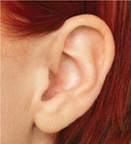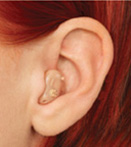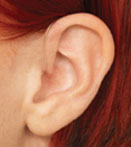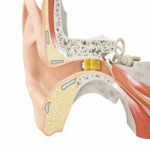Call us today on 1300 252 748 or email us!
Choosing the right device for your hearing needs depends on many things such as degree, type and configuration of your hearing loss, lifestyle, ear shape, manual and cognitive dexterity, cosmetic appearances, style of hearing aid, and of course budget.
At Clarity we factor in all those considerations when we recommend which device would best treat your hearing loss and this article addresses many of those points.
When it comes to selecting a treatment device to treat your hearing loss, Clarity’s independence means we have a very large range of devices from which to choose. This includes choices with a wide variety of features and options, a choice of optional rehabilitation packages, and wide price ranges. This means we can recommend options from different manufacturers that address your specific hearing loss and budget needs.
Our prices start from free for eligible pensioners, NDIS participants, health care card holders and DVA card holders. For patients not eligible for funding we have options starting at $295 for basic personal amplifiers through to $4000 for the most top of the range hearing aids.
What you must consider when thinking price though is that all hearing solutions on offer, no matter what price range, are of the highest quality and meet all Australian standards.
Also consider that you are not necessarily paying for better hearing with more expensive hearing aids. With top of the range hearing aids you are paying for more features – some which have nothing to do with hearing speech better.
Not many audiologists will tell you there is no independent peer reviewed research that validates any improvement in outcomes between lower level technology and high level technology so don’t let anyone tell you otherwise. In fact, researchers at Memphis University found there was no significant difference in listening effort required between “basic” and “premium” hearing aids. You can read the article here.
You can trust that Clarity’s audiologists are only going to recommend what you require to treat your hearing loss. They are not on commissions or sales targets-a practice employed by some other clinics-and they adhere strictly to our company policy of recommendation and treatment based on the Audiological Society of Australia membership charter Section A2:
“The welfare of the client, students, research subjects and the public must take precedence over a member’s self interest, or the interest of employers or colleagues”.
And Section A15:
“Any device recommended to a client, or to another professional for a client, must not be less suitable for the client than other available devices, taking into account the likely performance of the device, features of the device, the cost of the device to the client, and the preference of the client”.
With our hearing aids we unbundle all the services to make our pricing transparent and we ensure we offer several options for you to choose from so you can match your lifestyle needs and budgets.
So you simply purchase your hearing aid for a minimal cost just above wholesale price then choose which treatment and rehabilitation option best suits your needs to accompany the hearing aid.
Our margins are the same across all ranges as we are billing for our time and expertise to cover our costs, not through the sale of hearing aids, so there is no incentive for prescription of anything other than what is required to suit your needs. You can even purchase hearing aids elsewhere or bring your old hearing aids and we still adjust them or you can do our treatment programs.
At Clarity Hearing Solutions we also understand that it isn’t just your hearing needs that are unique and require a broad range of treatment devices, but your financial requirements are also just as diverse. This is why we strive to provide unique plans and packages to best deliver your hearing treatment to suit your financial situation.
At Clarity Hearing Solutions we offer several options for obtaining your treatment devices. Purchasing, No Gap Private Health Insurance Options, and purchase-free ClarityFlex subscription plans. Furthermore discreet options including Completely In Canal, In The Canal, and Receiver In Canal/Over The Ear options are available free for all eligible recipients through the Office of Hearing Services Program (HSP).
If you would like to know our price of a hearing aid you have been quoted on please see our full list and pricing here.
As a guide the following are the pricing Clarity charges for devices in different range bands. Remember, these are the exact same devices you will get from other providers from manufacturers including Bernafon, Starkey, Widex, Unitron, Sonic, Siemens Signia, Oticon, GN Resound and Phonak.
When it comes to selecting a treatment device there are a wide variety of features available in modern hearing aids. However, remember that most hearing aids, no matter what price range, are of the highest quality, and you are not necessarily getting better hearing if purchasing more advanced features. Remember that researchers at Memphis University found there was no significant difference in listening effort required between “basic” and “premium” hearing aids. You can read the article here.
Most of the features listed below are available in all hearing aid ranges and basic features such as directional microphones, telecoils and Bluetooth connectivity have been independently shown to significantly improve hearing and communication outcomes.
There are several styles of hearing aids available to suit your needs. Most styles are available across all price ranges, scroll down to see full list of product range within each style.
IIC (Invisible In the Canal)Very cosmetically appealing invisible device which sits deep in the second bend of the ear canal virtually completely hidden from view. Suitable for mild to severe losses. Can be remotely controlled by use of a smart phone app, remote control or magnetic wand. Some are now bluetooth compatible. |
 |
CIC (Completely In the Canal)Very cosmetically appealing invisible device which sits deep in the first bend of the ear canal virtually completely hidden from view. Suitable for mild to profound losses. Can be remotely controlled by use of a smart phone app or magnetic wand and some are Bluetooth compatible. Free for eligible pensioners and DVA recipients through the Office of Hearing Services scheme. . |
 |
ITC/ITE (In The Canal, In The Ear, Half Shell)Slightly larger than a CIC but more features can be added such as a directional microphone and telecoil. Suitable for mild to profound losses. Can be remotely controlled by use of a smart phone app or remote controls and are Bluetooth compatible. Free for eligible pensioners and DVA recipients through the Office of Hearing Services scheme. |
 |
RIC/OTE (Receiver In the Canal, Over The Ear)Very cosmetically appealing virtually invisible device for those with any type of hearing loss. Fitted with an open dome coupling specifically designed for Industrial Deafness and Age Related Hearing Loss, but with a Power coupling able to fit even the most profound hearing losses. Available in dust and water resistant models. Free for eligible pensioners and DVA recipients through the Office of Hearing Services scheme. |
  |
Deep Canal Instant WearStarkey AMP: very cosmetically appealing virtually invisible device, which sits deep in the ear canal between an IIC and CIC. Able to be fitted on the spot without any need for impressions and ordering. See more information here. |
 |
Lyric 24/7 Extended WearSemi-Permanent invisible deep canal non-surgical implanted device. Like a contact lens is implanted and replaced every 2 months and allows you to hear 24 hours a day 7 days a week. No inserting, changing batteries or any sort of management and maintenance.See more information on our Lyric page. |
 |
If you are ready to talk to someone about your hearing loss, make an appointment for an assessment with Clarity today.
Brisbane: Bribie Island, Carindale, Carseldine, Caboolture, Clayfield, Loganholme, Spring Hill, Sunnybank Hills
Ipswich: Booval
Gold Coast: Helensvale
Townsville: Hermit Park, Condon
Mackay: North Mackay
Regional Queensland: Ayr, Barcaldine, Bowen, Charleville, Charters Towers, Clermont, Emerald, Gladstone, Hughenden, Ingham, Longreach, Mitchell, Mt Isa, Palm Island, Proserpine, Quilpie, Richmond, Rockhampton, Roma, Sarina